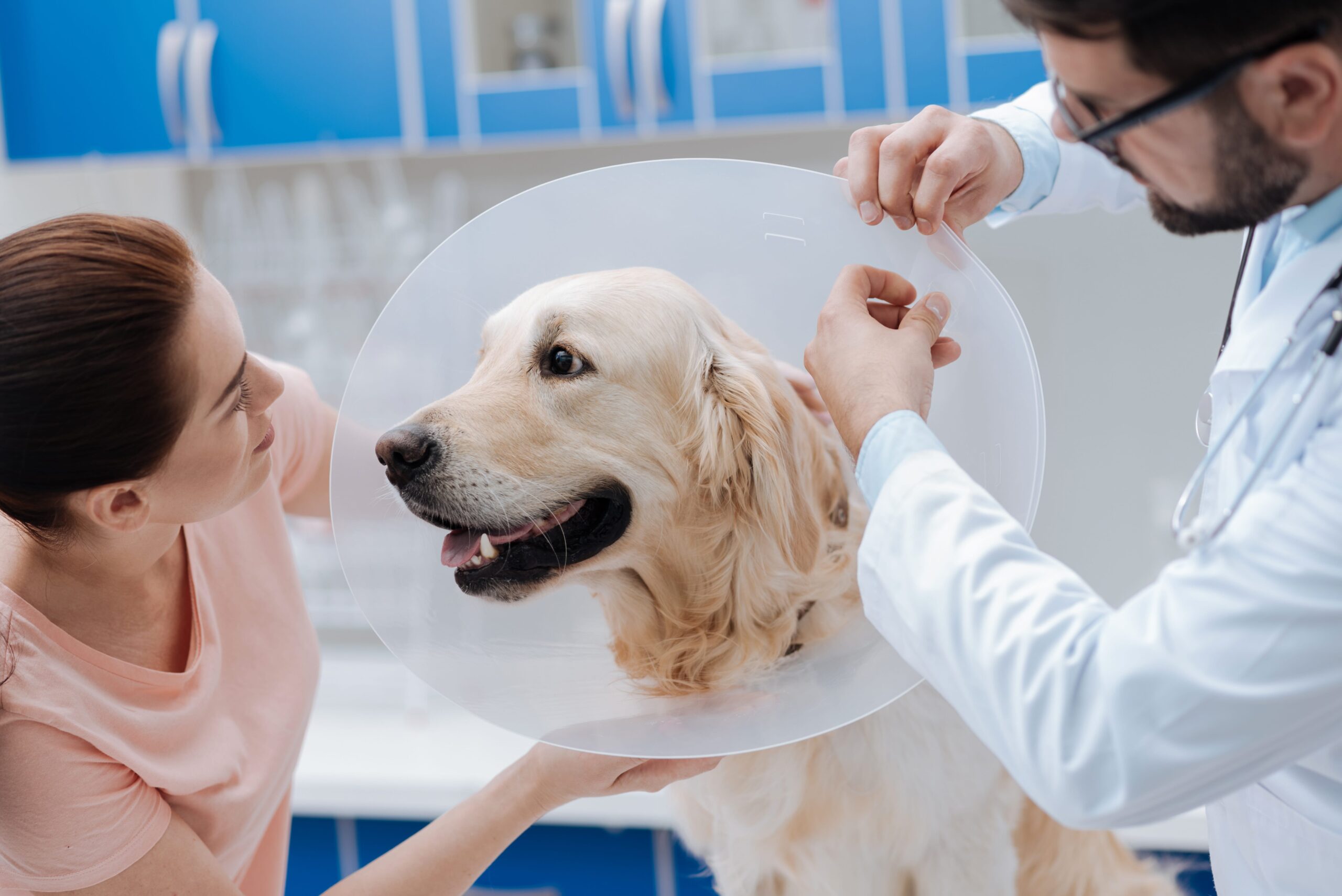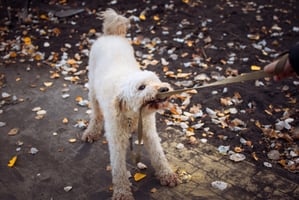The use of surgical neutering is widespread, utilised for its health benefits (Forsee et al., 2013; Yates and Leedham, 2019), reducing sexually dimorphic behaviours (Downes et al., 2015) and unwanted behaviours (Roulaux et al., 2020), and population control (Wongsaengchan and McKeegan, 2019). Challenges arise around appropriate neutering age, individual clinical cases and sex of the dog (Diesel et al., 2010). The UK is reported to have the highest worldwide neutering rate (Heimendahl, 2010), with the 2021 PAW Report informing that 71 percent of the canine population has been neutered, despite this decreasing from 81 percent in 2017. Conversely, in many Northern European countries ovariohysterectomy and castration procedures are monitored and are even prohibited in some locations by animal welfare acts (Heimendahl, 2010).
Current links between neutering and behaviour are conflicting, with anecdotal evidence valuing routine neutering for modifying behaviour, emphasising that neutering will improve behaviour, producing a calmer, well-rounded individual. Scientific literature fails to create a coherent, convincing argument, with many studies evidencing positive, negative or minimal impact of neutering on overall behaviour.
Physiology and behavioural interplay
The hypothalamic–pituitary–gonadal (HPG) axis is essential for homeostatic governance of reproductive functioning. Sex-related hormones and receptors are disseminated throughout the brain’s limbic system, functioning as neuromodulators and neurotransmitters, affecting sociosexual behaviour and emotion (Carter, 1998). In humans, elevated levels of testosterone correlate with higher levels of confidence and resilience (Eisenegger et al., 2017; Cherki et al., 2021). Increasing oestrogen levels in women with depression positively impacts recovery (Lascurain et al., 2020) and higher oestrogen levels beneficially impact life satisfaction (Sengül and Kasten, 2018). Correspondingly, entire dogs are “bolder” than neutered dogs, with entire males more confident than entire females (Starling et al., 2013).
In humans, elevated levels of testosterone correlate with higher levels of confidence and resilience ... Correspondingly, entire dogs are “bolder” than neutered dogs, with entire males more confident than entire females
Aggressive behaviour
Domestic dog aggression jeopardises dog welfare, and family- and stranger-directed aggression risks human health and safety, remaining a primary cause of shelter relinquishment and euthanasia. Neutering was used by 58 percent of Dutch dog owners for “correcting” unwanted behaviour, but failed to reduce aggression in most dogs (Roulaux et al., 2020). Marginal increases in levels of stranger-directed aggression in neutered dogs have even been noted (Farhoody et al., 2018), and earlier work showed neutering failed to improve stranger-directed aggression (Neilson et al., 1997). Neutered males have also been found to be more “emotionally unstable”, display a greater tendency for aggressive behaviour (Kaufmann et al., 2017) and exhibit higher rates of owner-directed aggression (Guy et al., 2001; Hsu and Sun, 2010). Conversely, other publications concluded human-directed (Matos et al., 2016) and conspecific aggression (Casey et al., 2012) were less prevalent in neutered dogs. Female spayed dogs are highly represented in many studies with a higher likelihood of presenting with human-directed aggression (Podberscek and Serpell, 1996; Guy et al., 2001; Kim et al., 2006; Bálint et al., 2017; D’Onise et al., 2017) and reactive behaviour (Lorenz et al., 2019) compared to neutered males and intact females, but this message is not coherent (Casey et al., 2012).
Resource guarding is highly represented in neutered dogs in comparison to intact dogs (Reisner et al., 2007); however, it was neutered males who were more likely to be implicated in human-directed growling and resource guarding rather than females
Resource guarding is highly represented in neutered dogs in comparison to intact dogs (Reisner et al., 2007); however, it was neutered males who were more likely to be implicated in human-directed growling and resource guarding rather than females (Guy et al., 2001; Jacobs et al., 2018). Children hospitalised with resource guarding-related dog bites were statistically more likely to have been bitten by a neutered dog (Jacobs et al., 2018).
Canine obsessive-compulsive disorder (OCD)
While evidence and links between neuter status and obsessive-compulsive disorder (OCD) in dogs are minimal, data suggests neutered male and female dogs are more likely to present with OCD-type behaviour (Overall and Dunham, 2002; Dinwoodie et al., 2019); however, neuter status and dog sex could not predict the form of OCD developed.
Fearful behaviour and anxious responses
Fearful behaviour can result in strained relationships between dogs and humans, welfare concerns, long-term health problems and reduced longevity, particularly during chronic stress (Dreschel, 2010).
Neutering has been implicated in increasing anxiousness in pet dogs (Kaufmann et al., 2017; Puurunen et al., 2020), with dogs neutered before the age of one year old presenting with exaggerated fearful responses (McGreevy et al., 2018; Stellato et al., 2021). Non-social fear was more liable to be seen in neutered dogs (Hakanen et al., 2020), and rates of noise phobia were highly represented in neutered dogs (Vucinic et al., 2013). Sex may influence unwanted behaviour development, with neutered males more likely to present with aggression and neutered females with anxiety (Cannas et al., 2018).
Links between neutering and anxious behaviour appear more conclusive and consistent than aggression, with published evidence suggesting neutering is not an appropriate strategy for reducing anxious responses and may magnify anxious and fearful tendencies.
Links between neutering and anxious behaviour appear more conclusive and consistent than aggression, with published evidence suggesting neutering is not an appropriate strategy for reducing anxious responses and may magnify anxious and fearful tendencies.
As defensive aggression has been linked to anxiety and fear (Notari et al., 2020), dogs exhibiting consistent anxious responses may pose a higher risk for owner-, stranger- or conspecific-directed aggression. It may be prudent to consider non-permanent, chemical methods of castration and spaying for dogs presenting with fearful responses, prior to gonadectomy.
General training
Police dog training was adversely affected by gonadectomy (Fattah and Abdel-Hamid, 2020), with entire dogs significantly more trainable than neutered dogs. Conversely, castrated male Shetland Sheepdogs appeared more trainable (Serpell and Hsu, 2005); however, in this study only 11 breeds were assessed and the authors cautioned against extrapolating these findings to other breeds. Delayed neutering (between 7 and 11 months of age) increased trainability and focus, and reduced hyperactivity, reactivity and prey drive compared to earlier neutering prior to 7 months (Zlotnick et al., 2019). Other publications showed minimal differences in trainability between neutered and entire dogs (Serpell and Hsu, 2005; Yates and Leedham, 2019).
Miscellaneous undesirable behaviours
When considering “miscellaneous” unwanted behaviours, there appears to be no beneficial effect of neutering. One large-scale review highlighted that neutered males and females were nearly twice as likely to exhibit behavioural problems (Dinwoodie et al., 2019), and another identified that excessive activity, barking and aggression are more prevalent in neutered dogs (Chung et al., 2016).
A longitudinal large-scale study showed that the majority of behaviours assessed via the Canine Behavioral Assessment and Research Questionnaire (C-BARQ) were less prevalent in dogs with longer exposure to gonadal hormones
A longitudinal large-scale study showed that the majority of behaviours assessed via the Canine Behavioral Assessment and Research Questionnaire (C-BARQ) were less prevalent in dogs with longer exposure to gonadal hormones, and only two behaviours more prevalent with delayed neutering: howling and urine-marking (McGreevy et al., 2018). The authors concluded that early neutering may have some beneficial effects, but may also have other undesirable consequences, including increased aggressive and fearful-related behaviours.
Sex-related behaviours
Despite inconclusive evidence to suggest that neutering reduces reproductive-related behaviours such as roaming (McGreevy et al., 2018), the benefits for reducing the likelihood of unwanted breeding cannot be diminished. Problem behaviours associated with seasonality or pseudopregnancy in bitches, or urine-marking, sex-related mounting and some forms of aggression in male dogs may improve post-neutering. However, behavioural intervention may also be required in these cases (Warnes, 2018).
Issues with current understanding
Literature and methodologies in this area are problematic, as pre- and post-neutering research typically relies on owner reflection on dog behaviour which can be problematic, or relies on recruiting neutered and unneutered dogs with extensive variables between groups. Many methodologies cannot comprehensively evaluate the impact of genetics, epigenetics, environment, social stability and prior training alongside the removal of reproductive hormones.
Many methodologies cannot comprehensively evaluate the impact of genetics, epigenetics, environment, social stability and prior training alongside the removal of reproductive hormones
To further existing understanding, research needs to encompass behavioural evaluation of dogs pre- and post-neutering, which poses ethical issues if surgical gonadectomy may perpetuate existing behavioural issues.
Considerations for clinical practice
Due to conflicting evidence surrounding the effects of gonadectomy on unwanted behaviours, it is suggested that clinicians consider individual clinical and behavioural history, and discuss potential behavioural benefits and contraindications with the owner prior to the procedure. It may be prudent to trial temporary medical contraceptives in dogs with behavioural issues, particularly fearfulness, and evaluate the effect of reducing testosterone and oestrogen on overall behaviour, before opting for permanent removal of reproductive hormones.








